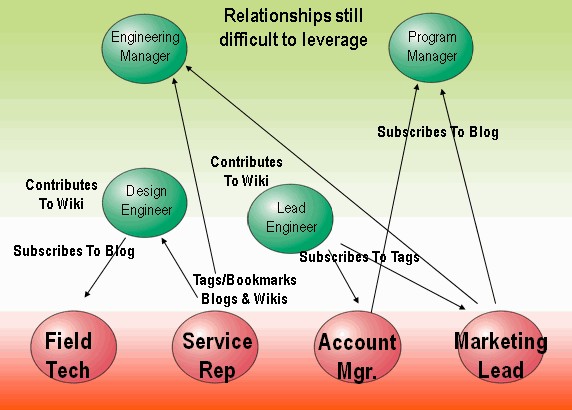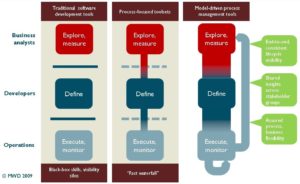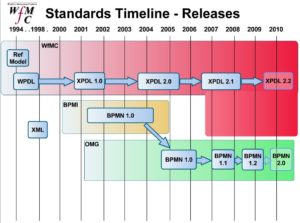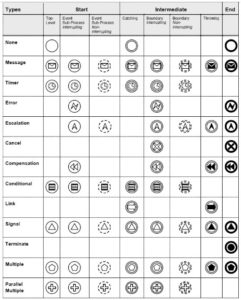I finally found time to watch the replay of the webinar that I missed earlier this week featuring Mike Gotta of the Burton Group on enterprise social networking. He started with an evolution of enterprise social networks, beginning with email: although fragmented and a highly flawed model, that’s how many people and organizations interacted for social/community (i.e., non-transactional) purposes. From there, online communities evolved, but that tended to result in stovepiped communities where the relationships spanned community boundaries; even inside companies, participation often fails to cross departmental boundaries. Social networking sites within enterprises try to create borderless participation: greater transparency and visibility of information by having a place where people can built their social graph through structures such as online profiles and collaboration tools.

Some business drivers for enterprise social networking have been with us a long time: connecting with other people globally to share information and collaborate, and enable crowdsourcing for bottom-up innovation. Others, however are relatively new: addressing generational shifts in how people work and interact online, and creating new ways to learn through social networking.
Unfortunately, many enterprise social networking projects are considered discretionary, so are suffering from budget cuts in today’s economic environment. To get approval for them now, you need to make it relevant to the business, showing how social networking can have an ROI through improved quality and efficiency of work. Since social networking spans multiple levels and departments within an enterprise, sponsors may come from a number of different areas and include some of the up-and-coming younger management.
Gotta had some interesting thoughts on how corporate culture and leadership affects adoption, as well as the need for governance and best practices for participation. Many parts of an organization can feel threatened by employee self-service: if you can update a wiki yourself, someone in IT support no longer has that function to help justify their job. There’s also a control issue, where top-down command-and-control style organizations have a difficult time letting go and allowing anyone within the organization to see certain information, much less make updates to it. They should all take a hard look at what Avenue A|Razorfish has been doing for more than 2 years: making their entire intranet one big wiki that anyone can edit. I still have customers that want to track the time that it takes for employees to go to the bathroom; I really can’t see them ready to take some of these steps yet, although we all have to start somewhere.
There’s a big HR component to enterprise social networking: there’s information that might be on the social sites that would have traditionally be locked inside HR’s files (such as each person’s skills and interests). Instead of feeling threatened by social networking inside the enterprise, HR should be taking a strategic role and seeing this as an opportunity to better engage with employees as well as provide better talent management and professional development.
He also had some excellent pointers on encouraging adoption, discussing how different organizations have different ways to do that: some focused on the early adopters and their behaviors, some on top-down participation, and some on pushing certain content types. He noted that there’s no right way to do this, but each organization has to try things out and respond to the ones that work. It’s great to leverage people’s acceptance and knowledge of consumer sites like Facebook, although that message is diluted if your enterprise blocks access to Facebook while holding it up as an example of social networking.
Although it seems retro, communities can be one way to help people get started co-creating with social networking, assuming that they’re embedded within the social networking infrastructure: the ability to create communities of interest or ad hoc groups at the grassroots level shows people that social networking is a platform on which to build communication, not just a specific application.
The bottom line is that social networks enable more adaptive organizations, through transparency of knowledge sharing, improved collaboration, and better use of the internal talent pool.
We also heard from Brian Kellner of NewsGator (the webinar sponsor) about some customer success stories: large and small enterprises, and both internal and external-facing networks. Check out the webinar for more details on the specific case studies, as well as his tips for successful enterprise social networking; I found the most critical to be understanding the cost of not acting now (which is common to most initiatives).
There was a great Q&A at the end, covering a variety of subjects:
- The definition of “seeding” of a social networking site, and some of seeding strategies such as making some information only available on the social networking site.
- The use of microblogging as part of an enterprise social networking strategy for quick information sharing.
- Repercussions of restricting people from social sites from within the enterprise (especially in the face of recent research that indicates that using the internet for personal reasons can improve productivity).
- Barriers to adoption, and tips and tricks for overcoming them.
- How social networking fits into enterprise “knowledge management”: a term that Gotta doesn’t like (neither do I) but he addressed the issue of how all the different information sources fit together. This last was particularly interesting because I’ve been having an online discussion about how content splits between ECM and wikis, which I’ll be blogging about shortly; it all starts to tie together when you consider where certain types of information should naturally reside within your enterprise information ecosystem.
For those of you in the US, have a great long Memorial Day weekend!




